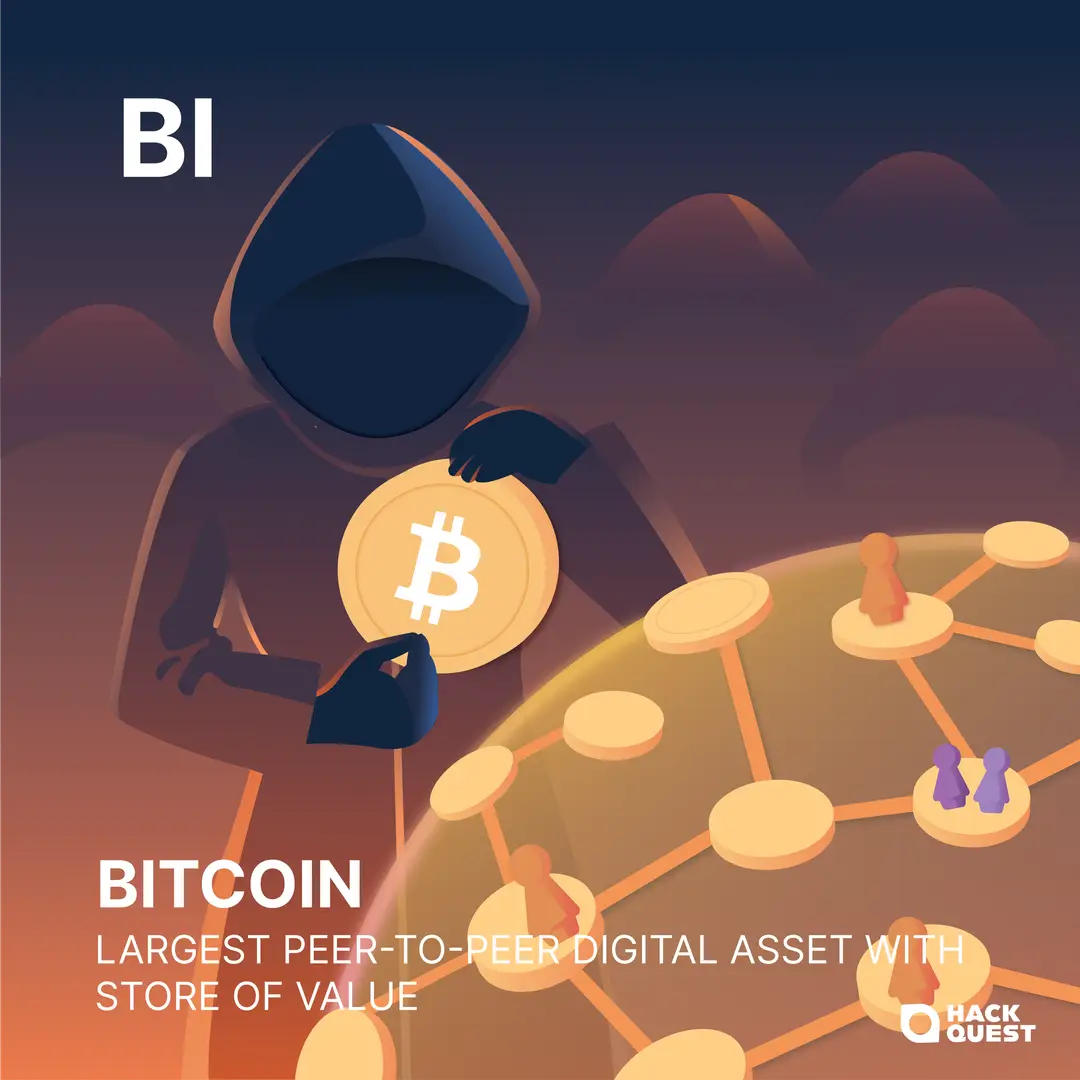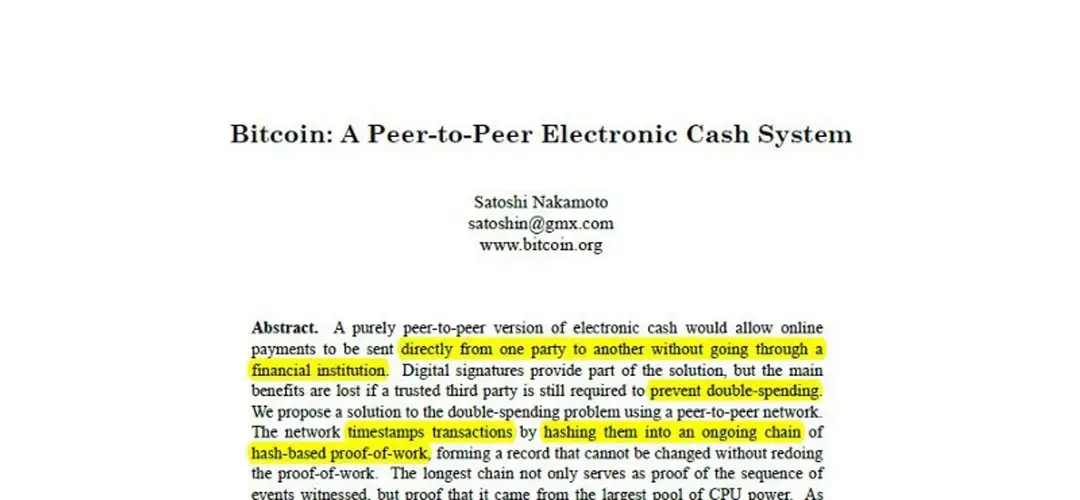Back
Bitcoin / bitcoin (BTC)
DeFi
By HackQuest
Apr 2,20246 min readWelcome to the world of Web3, where cryptocurrencies, blockchain, and a unique culture converge. Entering the world of Web3 can be both thrilling and overwhelming, especially when faced with the seemingly cryptic language used by enthusiasts. Don't worry if you feel they sound like some secret codes, we are here to unravel their meaning in Web3 context. In this article, we are going to introduce [Bitcoin].

What Does 'Bitcoin' Mean?
Bitcoin is a form of digital currency, known as cryptocurrency, that operates independently of a central bank. It is created, distributed, and secured through a decentralized system using cryptographic techniques, which makes it not only a currency but also a digital asset.
The Origin of Bitcoin
The idea of Bitcoin was first presented in a white paper titled "Bitcoin: A Peer-to-Peer Electronic Cash System" in 2008 by Satoshi Nakamoto. Nakamoto proposed a system that could facilitate online payments directly from one party to another without going through a financial institution. This was in response to the lack of trust in financial institutions following the 2008 financial crisis. Bitcoin's network came into existence in January 2009 with the release of the first Bitcoin software and the mining of the first block of bitcoins, known as the genesis block.

Source: freeCodeCamp
How Does Bitcoin Work?
Blockchain Technology
At the heart of Bitcoin is the blockchain, a public ledger that contains all confirmed transactions. This technology ensures that every transaction is recorded, making it nearly impossible to counterfeit or double-spend bitcoins.
Mining
Bitcoin mining is the process by which new bitcoins are created and transactions are verified and added to the blockchain. Miners use powerful computers to solve complex mathematical problems, and the first miner to solve the problem gets to add a new block to the blockchain and is rewarded with bitcoins.
Wallets and Transactions
To use Bitcoin, individuals need a digital wallet, which can be thought of as a bank account for cryptocurrencies. Bitcoin transactions occur when one party sends bitcoins from their wallet to another party's wallet address, facilitated by the blockchain.
📢
Why is Bitcoin Significant?
Decentralization
Unlike traditional currencies, Bitcoin operates on a decentralized network, meaning no single institution controls the Bitcoin network. This offers a level of freedom and anonymity not available with standard currencies.
Security and Transparency
The use of blockchain technology ensures that all transactions are secure, transparent, and immutable. Once a transaction is recorded on the blockchain, it cannot be altered or deleted.
Global Accessibility
Bitcoin can be sent or received anywhere in the world, at any time, without the need for traditional banking systems. This makes it especially appealing for people in countries with unstable currencies or financial infrastructures.
Conclusion
Bitcoin has not only introduced the world to the possibility of a digital currency but has also sparked a revolution in how we envision the future of money. Its decentralized nature, combined with the security of blockchain technology, presents a fascinating alternative to traditional financial systems. While Bitcoin continues to face challenges, including volatility and regulatory scrutiny, its impact on the financial landscape is undeniable. As we move further into the digital age, understanding Bitcoin becomes essential for anyone interested in the future of finance.
If you would like to learn more about slang like SATS, let’s explore more in our HackQuest Web3 Glossary!
🚀
Check out: What is the meaning of SATS